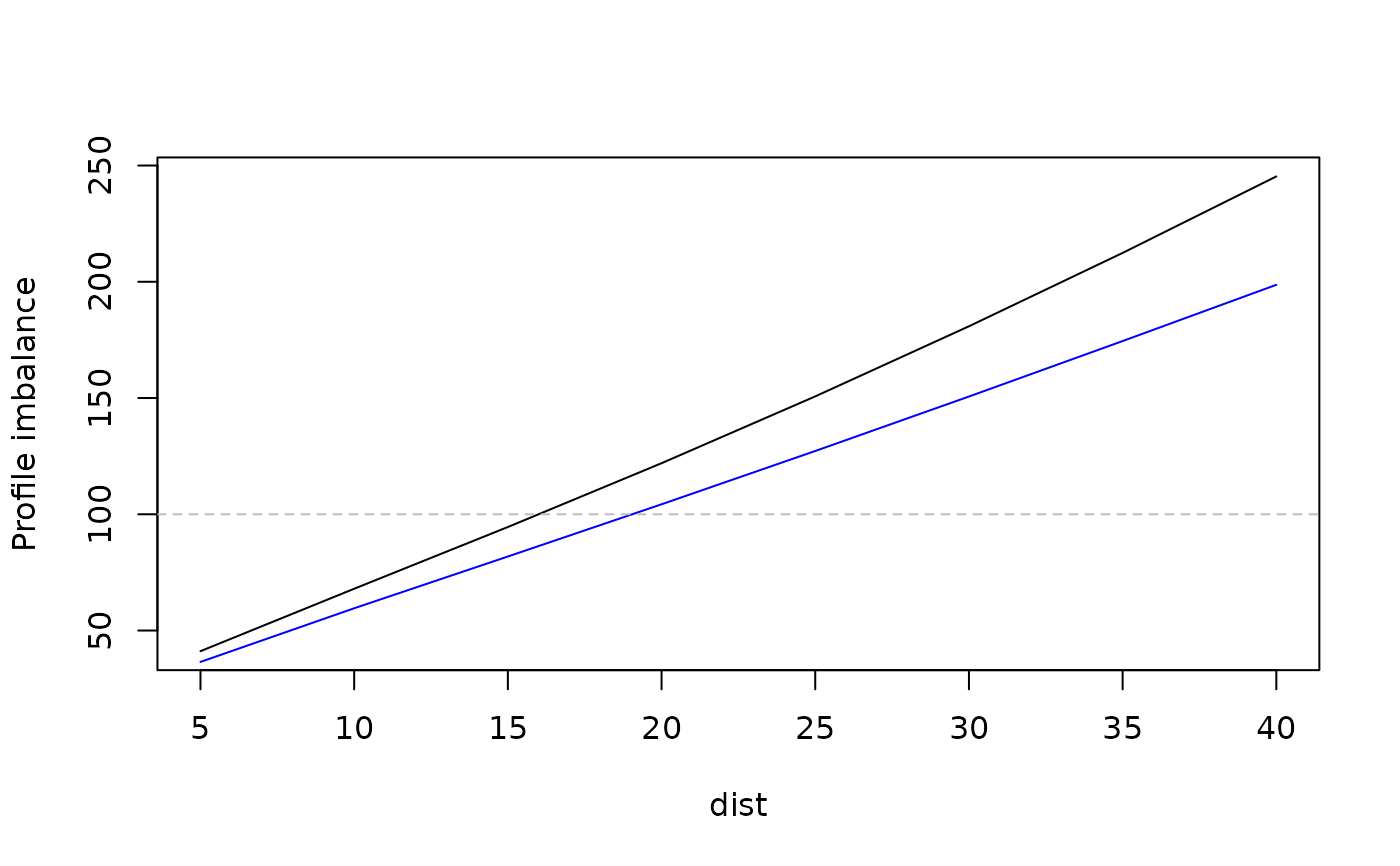Family of functions that serve a purpose of probing sprint or force-velocity profile. This is done by increasing individual sprint parameter for a percentage and calculating which parameter improvement yield biggest deduction in sprint tim
probe_FV "probes" F0 and V0 and calculates which one
improves sprint time for a defined distance
probe_MSS_MAC "probes" MSS and MAC and calculates which one
improves sprint time for a defined distance
Usage
probe_FV(
distance,
F0,
V0,
bodymass = 75,
inertia = 0,
resistance = 0,
perc = 2.5,
...
)
probe_MSS_MAC(distance, MSS, MAC, perc = 2.5)Arguments
- distance
Numeric vector
- F0, V0
Numeric vectors. FV profile parameters
- bodymass
Body mass in kg
- inertia
External inertia in kg (for example a weight vest, or a sled). Not included in the air resistance calculation
- resistance
External horizontal resistance in Newtons (for example tether device or a sled friction resistance)
- perc
Numeric vector. Probing percentage. Default is 2.5 percent
- ...
Arguments passed on to
get_air_resistancevelocityInstantaneous running velocity in meters per second (m/s)
bodyheightIn meters (m). Default is 1.75m
barometric_pressureIn Torrs. Default is 760Torrs
air_temperatureIn Celzius (C). Default is 25C
wind_velocityIn meters per second (m/s). Use negative number as head wind, and positive number as back wind. Default is 0m/s (no wind)
- MSS, MAC
Numeric vectors. Model parameters
Value
probe_FV returns a data frame with the following columns
- F0
Original F0
- V0
Original F0
- bodymass
Bodymass
- inertia
Inertia
- resistance
Resistance
- Pmax
Maximal power estimated using F0 * V0 / 4
- Pmax_rel
Relative maximal power
- slope
FV profile slope
- distance
Distance
- time
Time to cover distance
- probe_perc
Probe percentage
- F0_probe
Probing F0
- F0_probe_time
Predicted time for distance when F0 is probed
- F0_probe_time_gain
Difference in time to cover distance between time_optimal and time
- V0_probe
Probing V0
- V0_probe_time
Predicted time for distance when V0 is probed
- V0_probe_time_gain
Difference in time to cover distance between time_optimal and time
- profile_imb
Percent ratio between V0_probe_time_gain and F0_probe_time_gain
probe_MSS_MAC returns a data frame with the following columns
- MSS
Original MSS
- MAC
Original MAC
- Pmax_rel
Relative maximal power estimated using MSS * MAC / 4
- slope
Sprint profile slope
- distance
Distance
- time
Time to cover distance
- probe_perc
Probe percentage
- MSS_probe
Probing MSS
- MSS_probe_time
Predicted time for distance when MSS is probed
- MSS_probe_time_gain
Difference in time to cover distance between probe time and time
- MAC_probe
Probing MAC
- MAC_probe_time
Predicted time for distance when MAC is probed
- MAC_probe_time_gain
Difference in time to cover distance between probing time and time
- profile_imb
Percent ratio between MSS_probe_time_gain and MAC_probe_time_gain
Examples
MSS <- 10
MAC <- 8
bodymass <- 75
fv <- create_FVP(MSS, MAC, bodymass)
dist <- seq(5, 40, by = 5)
probe_MSS_MAC_profile <- probe_MSS_MAC(
distance = dist,
MSS,
MAC
)[["profile_imb"]]
probe_FV_profile <- probe_FV(
distance = dist,
fv$F0,
fv$V0,
fv$bodymass
)[["profile_imb"]]
plot(x = dist, y = probe_MSS_MAC_profile, type = "l", ylab = "Profile imbalance")
lines(x = dist, y = probe_FV_profile, type = "l", col = "blue")
abline(h = 100, col = "gray", lty = 2)

